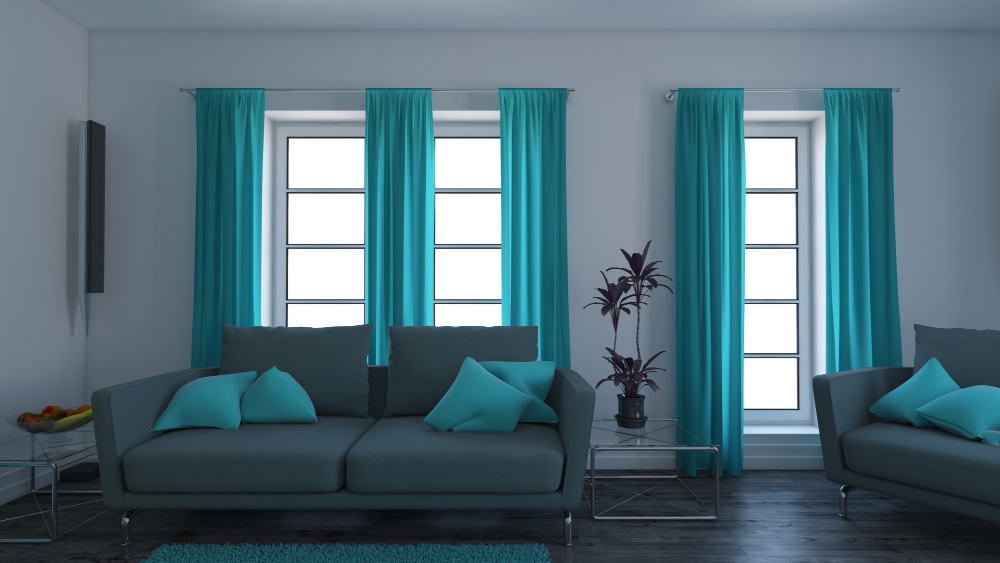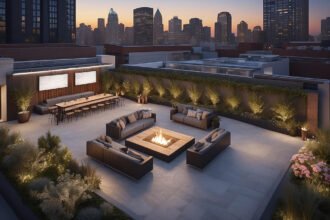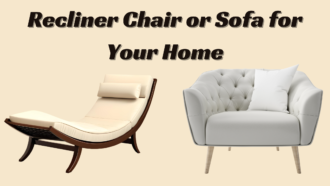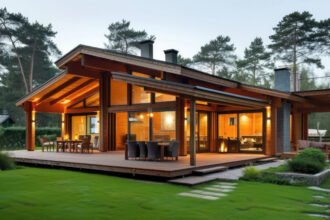A Guide to the Types of Windows Covers and Choosing the Best One for You
Every house needs windows to offer natural light, ventilation, and views of the surrounding environment. Still, they also need proper covers to provide privacy, manage sunlight, and increase energy efficiency. Finding suitable window coverings for your home or office might seem complicated, but it can be easy with proper guidance.
Understand Your Options
Before choosing window covers, analyze the classifications that exist in them. The window coverings exist in four primary forms: blinds, shades, curtains, and shutters. Each variety has distinct characteristics and advantages that suit various tastes and needs.
Blinds
It has adjustable slats that regulate light and privacy. They may be horizontal or vertical. The material varieties include wood, fake wood, metal, and vinyl.
Horizontal blinds, such as Venetian blinds, have slats that slant open and closed, but vertical blinds are best suited for wide windows and sliding glass doors. They are flexible, enabling you to adapt the amount of light and privacy to your desires.
Shades
They are window coverings that alter light levels by raising or lowering a single piece of cloth.
- While roller shades are simple and sleek.
- Roman shades offer elegance with soft fabric folds.
- Cellular blinds use honeycomb-shaped cells to offer insulation and energy efficiency.
- Solar blinds are intended to prevent UV radiation. They provide flexibility in light management and are also available in a variety of opacity levels to meet your requirements.
To enhance basement windows, improve security, or prevent debris accumulation, window well covers provide a clean and secure environment, ensuring both functionality and peace of mind.
Curtains
Pure curtains are fabric panels that hang vertically from a rod or track over a window. They come in a wide range of materials, patterns, and designs, from sheer to blackout. Pure curtains enable diffused light to pass through while giving limited privacy; they create a gentle, airy atmosphere in a space.
A blackout curtain, lined with a light-blocking cloth, provides optimum privacy and insulation, eliminating outside light. Curtains also add texture, color, and warmth to a room, making them an adaptable option for every room in the house.
Shutters
It is a solid covering with louvers or slats that may be opened and closed to regulate light and ventilation. They are often composed of wood, vinyl, or composite materials and available in various designs, such as plantation shutters, café shutters, and conventional shutters.
Plantation shutters have large louvers that give unrestricted views and seclusion and insulation when closed. To add architectural flair and timeless beauty to any home’s décor, window well covers make a flexible option.
Factors to consider
Before choosing the ideal window covering for your house, numerous criteria should be considered:
- Functionality: Analyze your significant requirements, such as lighting control, privacy, insulation, and simplicity of use.
- Style: Consider the general style and aesthetic of your house and the particular décor of the space where the window coverings will be placed.
- Budget: Set a budget for your window coverings and look into solutions that will satisfy your needs while staying within your budget.
- Maintenance: Before selecting a window covering that fits your lifestyle and tastes, consider the degree of maintenance necessary for each kind.
- Energy Efficiency: To improve insulation and save on heating and cooling expenditures, compare the energy-saving features of various window coverings.
Analyzing the window covering varieties and considering the above factors will improve the house’s comfort and attractiveness for years.
Maximizing Comfort and Efficiency with Window Covers
1. Temperature Regulation:
Window covers regulate indoor temperatures by reducing heat gain in the summer and heat loss in the winter. During hot summer, they can block out excess sunlight, preventing rooms from overheating and reducing the need for air conditioning. Similarly, insulating window covers in colder climates help retain heat indoors, leading to lower heating costs and increased comfort.
2. Energy Efficiency:
Energy-efficient window covers contribute to overall energy savings by minimizing heat transfer through windows. According to the U.S. Department of Energy, heat gain and loss through windows are responsible for up to 30% of residential heating and cooling energy use. Investing in high-quality window covers, such as insulated curtains, cellular shades, or reflective films, can significantly reduce energy consumption and utility bills over time.
3. UV Protection:
Prolonged exposure to ultraviolet (UV) radiation can cause furniture, flooring, and artwork to fade. Window covers with UV-blocking properties act as a barrier, shielding interiors from harmful UV rays while preserving the integrity of furnishings and décor. This not only helps maintain a space’s aesthetic appeal but also extends the lifespan of valuable assets.
4. Privacy and Security:
Window covers offer privacy by preventing outsiders from entering your home or office. Whether blinds, shades, or tinted films, these coverings provide varying degrees of privacy without compromising natural light. Additionally, they serve as a deterrent against intruders by concealing a building’s interior from prying eyes, enhancing security and peace of mind for occupants.
5. Glare Reduction:
Glare from sunlight can be a nuisance, causing eye strain and discomfort, particularly in workspaces or areas with electronic screens. Window covers such as blinds or adjustable shades allow occupants to control the amount of incoming light, reducing glare and creating a more comfortable environment for tasks that require visual concentration.
6. Noise Reduction:
Window covers can help dampen sound transmission in urban environments or areas with high outdoor noise levels, creating a quieter indoor environment. Thick curtains or double-glazed windows with soundproofing properties effectively minimize external noise pollution and promote relaxation and concentration indoors.
7. Enhanced Aesthetics:
Window covers serve as decorative elements that complement the overall design scheme of a room. With a wide range of styles, colors, and materials available, homeowners and designers can choose window covers that enhance the visual appeal of interiors while adding personality and character to living spaces.
8. Easy Maintenance and Operation:
Most window covers are designed for easy maintenance and operation, allowing users to adjust them for light control, privacy, and ventilation. Modern window coverings come with motorized or automated features, enabling remote control via smartphone apps or home automation systems for added convenience and functionality.



















